SDG GOAL 5
GENDER EQUALITY
Goal 5. Achieve gender equality, empower all women and girls
|
|
|
|
DIRECT NAVIGATION TO INDIVIDUAL WEBPAGE FOR EACH GOAL
|
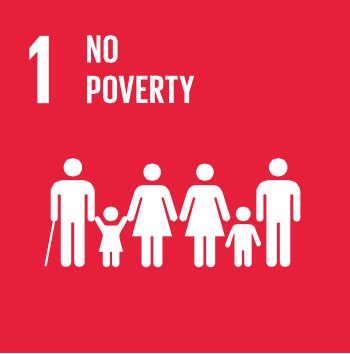
|
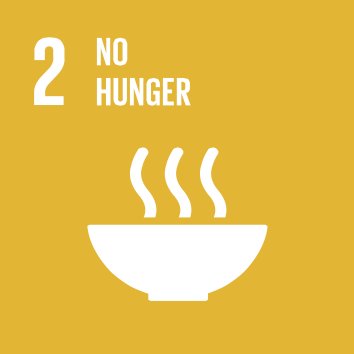
|
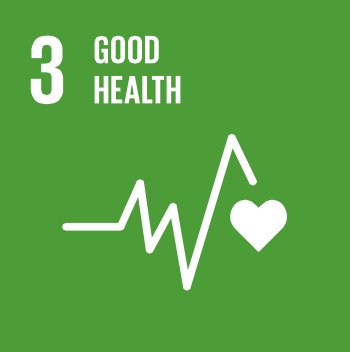
|
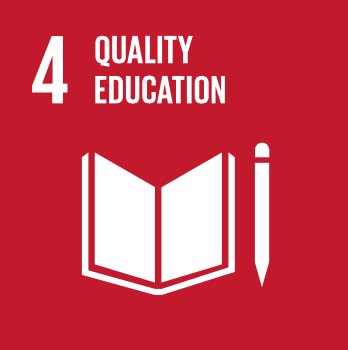
|
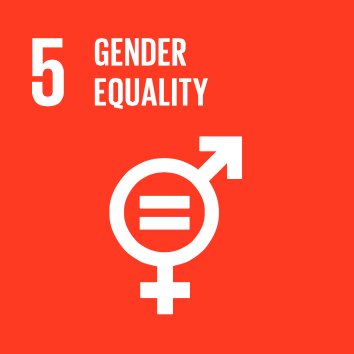
|
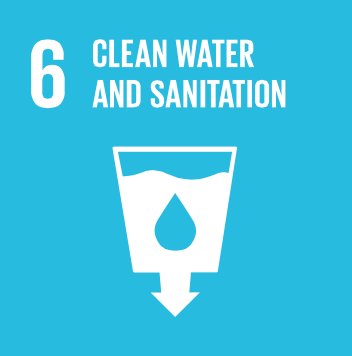
|
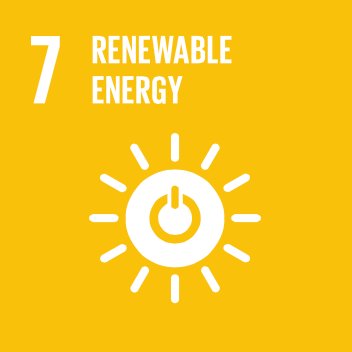
|
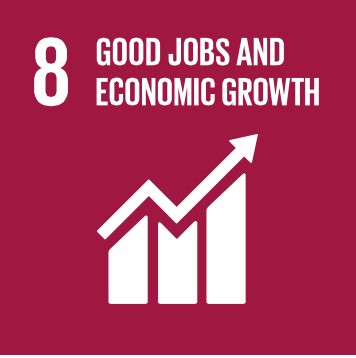
|
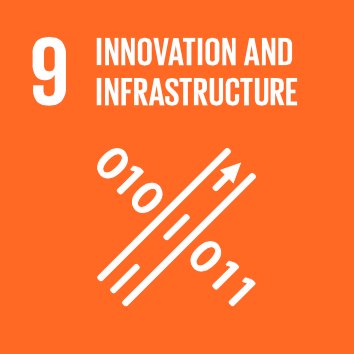
|
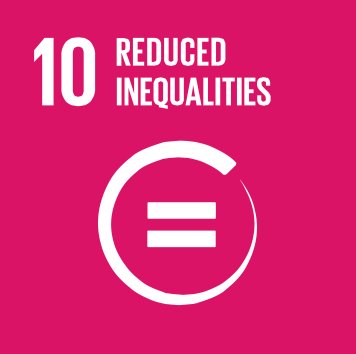
|
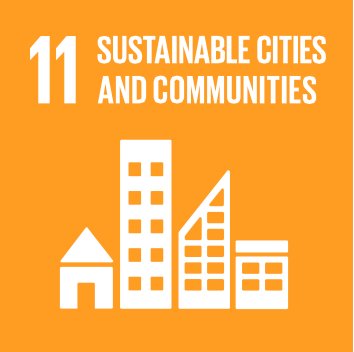
|
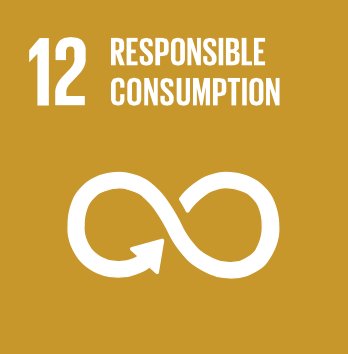
|
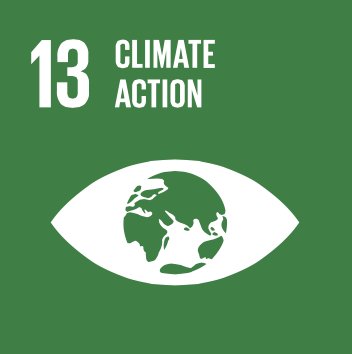
|
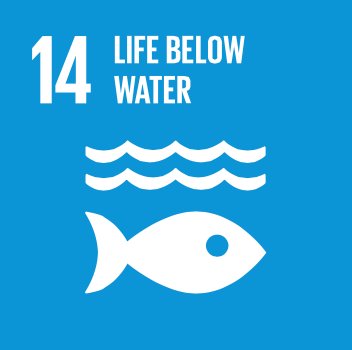
|
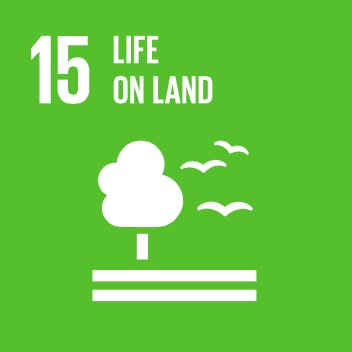
|
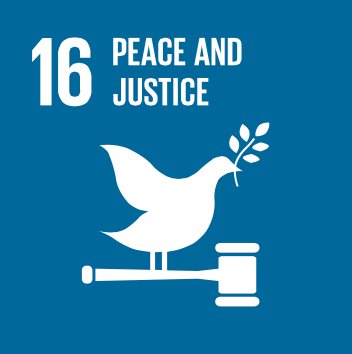
|
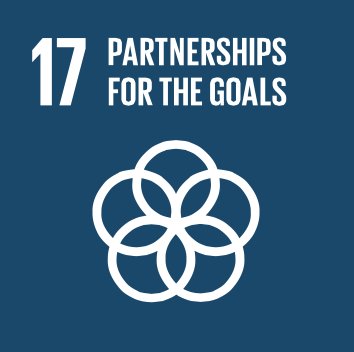
|
|
SDG GOAL 5 ... GENDER EQUALITY
Goal 5. Achieve gender equality, empower all women and girls
|

|
Goal 5. GENDER EQUALITY ... achieve gender equality, empower all women and girls
|
|
|
Goals and targets
|
Indicators
|
|
|
5.1
|
End all forms of discrimination against all women and girls everywhere
|
5.1.1 Whether or not legal frameworks are in place to promote, enforce and monitor equality and non-discrimination on the basis of sex
|
|
|
5.2
|
Eliminate all forms of violence against all women and girls in the public and private spheres, including trafficking and sexual and other types of exploitation
|
5.2.1 Proportion of ever-partnered women and girls aged 15 years and older subjected to physical, sexual or psychological violence by a current or former intimate partner in the previous 12 months, by form of violence and by age
5.2.2 Proportion of women and girls aged 15 years and older subjected to sexual violence by persons other than an intimate partner in the previous 12 months, by age and place of occurrence
|
|
|
5.3
|
Eliminate all harmful practices, such as child, early and forced marriage and female genital mutilation
|
5.3.1 Proportion of women aged 20-24 years who were married or in a union before age 15 and before age 18
5.3.2 Proportion of girls and women aged 15-49 years who have undergone female genital mutilation/cutting, by age
|
|
|
5.4
|
Recognize and value unpaid care and domestic work through the provision of public services, infrastructure and social protection policies and the promotion of shared responsibility within the household and the family as nationally appropriate
|
5.4.1 Proportion of time spent on unpaid domestic and care work, by sex, age and location
|
|
|
5.5
|
Ensure women’s full and effective participation and equal opportunities for leadership at all levels of decision-making in political, economic and public life
|
5.5.1 Proportion of seats held by women in national parliaments and local governments
5.5.2 Proportion of women in managerial positions
|
|
|
5.6
|
Ensure universal access to sexual and reproductive health and reproductive rights as agreed in accordance with the Programme of Action of the International Conference on Population and Development and the Beijing Platform for Action and the outcome documents of their review conferences
|
5.6.1 Proportion of women aged 15-49 years who make their own informed decisions regarding sexual relations, contraceptive use and reproductive health care
5.6.2 Number of countries with laws and regulations that guarantee women aged 15-49 years access to sexual and reproductive health care, information and education
|
|
|
5.a
|
Undertake reforms to give women equal rights to economic resources, as well as access to ownership and control over land and other forms of property, financial services, inheritance and natural resources, in accordance with national laws
|
5.a.1 (a) Proportion of total agricultural population with ownership or secure rights over agricultural land, by sex; and (b) share of women among owners or rights-bearers of agricultural land, by type of tenure
5.a.2 Proportion of countries where the legal framework (including customary law) guarantees women’s equal rights to land ownership and/or control
|
|
|
5.b
|
Enhance the use of enabling technology, in particular information and communications technology, to promote the empowerment of women
|
5.b.1 Proportion of individuals who own a mobile telephone, by sex
|
|
|
5.c
|
Adopt and strengthen sound policies and enforceable legislation for the promotion of gender equality and the empowerment of all women and girls at all levels
|
5.c.1 Proportion of countries with systems to track and make public allocations for gender equality and women’s empowerment
|
|
INDICATORS / WORKING NOTES
Goal 04 ... Proposed Indicators 42 to ??
Potential and Illustrative Core Indicators
|
|
Indicator 42:
|
Prevalence of women 15-49 who have experienced physical or sexual violence by an intimate partner in the last 12 months
Rationale and definition: Violence against women and girls is important not only because of the moral or
public health issues it raises, but also since the threat of ‘domestic' violence keeps women in the home and
further constrains women's movements and actions, limiting their life choices. The Global Burden of Disease
estimates that over 30% of all women aged 15 and older suffer physical or sexual partner abuse during their
lifetime. Knowing the incidence and prevalence of violence is a first step to ensuring adequate prevention
policies.
This indicator measures the occurrence of violence against women by intimate partners. Violence is defined
as physical and/or sexual violence and the threat of such violence. Since most violence against women is
perpetrated by their husband or intimate partner, this measure captures most incidences of violence against
women. The 12-month measure of partner violence is better suited than a lifetime measure, to reveal
changes in levels and risks of violence over time.
Disaggregation: By frequency, age, marital status, urban/rural and type of and severity of violence.
Comments and limitations: Measures of partner violence in high-income countries would need to be recalculated
to conform to the data available globally.
Preliminary assessment of current data availability by Friends of the Chair: A
Potential lead agency or agencies: WHO and the UN Statistics Division collect this data based on
international and national surveys.89
|
|
|
Indicator 43:
|
Percentage of referred cases of sexual and gender-based violence against women and children that are investigated and sentenced
Rationale and definition: Sexual and gender-based violence remains widespread, and too often ends in
impunity. This indicator, recommended as a measure under UNSCR 1325 on women and peace and security,
assesses how the police and justice system process and manage violence against women and children. The
three stages- reporting, investigating, and sentencing- are all important and interrelated. Reporting suggests
confidence in the system, investigation shows commitment by the police/legal establishment, while
sentencing shows justice being achieved.
This indicator is also a good proxy for a broader measure of the quality of the rule of law and access to
justice in a given country. In order to know whether a justice system is performing, several aspects must be
measured: the capacity to redress crimes, whether citizens trust formal system enough to actually go to
police and courts, and the rates of redress. Each of these pieces of information gives an important part of
the picture, and focusing on the treatment of particularly vulnerable groups is a good test of the system as a
whole.
Disaggregation: By sex and age. Further opportunities for disaggregation to be reviewed.
Comments and limitations: Limitations include the lack of data and inconsistency in reporting across
countries; lack of gender-sensitivity, capacity and resources of the police and judicial system; persistent
89 UN Statistics Division, (2010), The World's Women 2010: Trends and Statistics, New York, NY: UN Statistics, 127.
Revised working draft (July 25, 2014)
60
discriminatory attitudes and practices, and the likelihood that these crimes are often resolved informally
within the community are major ongoing challenges.
Preliminary assessment of current data availability by Friends of the Chair: A
Potential lead agency or agencies: Civil society networks such as the Global Network of Women Peacebuilders are actively engaged in building capacity to measure and implement this and other indicators from the UNSCR 1325.90 UN Women could take on responsibility for gathering data.
|
|
|
Indicator 44:
|
Percentage of women aged 20-24 who were married or in a union before age 18
Rationale and definition: This indicator tracks the prevalence of child marriage, as defined by UNICEF. Child
marriage is a violation of basic rights and may cause lifelong harm. Evidence shows that most girls who
marry early abandon formal education and many have early, often high-risk, pregnancies.91 Child brides are
also at higher risk of abuse, exploitation, and separation from family and friends, which can all have major
consequences on health and wellbeing.
Disaggregation: By age, urban/rural, ethnicity, income level.
Comments and limitations: To be determined.
Preliminary assessment of current data availability by Friends of the Chair: To be determined.
Potential lead agency or agencies: UNICEF
|
|
|
Indicator 45:
|
Prevalence of harmful traditional practices
Rationale and definition: The prevalence of harmful traditional practices, particularly the practice of female
genital mutilation (FGM, also called “female genital cutting” or “female genital mutilation/cutting”) is
measured as the percentage of women aged 15-49 who respond positively to surveys asking if they
themselves have been cut. FGM refers to all procedures involving partial or total removal of the external
female genitalia or other injury to the female genital organs for non-medical reasons. FGM has no known
health benefits, and is on the contrary painful and traumatic, with immediate and long-term health
consequences. The practice reflects deep-rooted gender inequality and is an extreme form of discrimination
against women.92
Disaggregation: By age, ethnicity, and income level. WHO further distinguishes by four categories of FGM:
Types I, II, III, and 'nicking' Type IV.93
Comments and limitations: To be determined.
Preliminary assessment of current data availability by Friends of the Chair: To be determined.
Potential lead agency or agencies: WHO, UNICEF.
90 Global Network of Women Peacebuilders, (2012), Women Count - Security Council Resolution 1325: Civil Society Monitoring
Report.
91 See UNICEF webpage on Child marriage http://www.childinfo.org/marriage.html
92 World Health Organization, (2008), Eliminating female genital mutilation: An interagency statement - OHCHR, UNAIDS, UNDP,
UNECA, UNESCO, UNFPA, UNHCR, UNICEF, UNIFEM, WHO. Online at
http://www.who.int/reproductivehealth/publications/fgm/9789241596442/en/
93 See WHO website on Female Genital Mutilation (FGM): http://www.who.int/reproductivehealth/topics/fgm/en/
Revised working draft (July 25, 2014)
61
|
|
|
Indicator 46:
|
Average number of hours spent on paid and unpaid work combined (total work burden), by sex
Rationale and Definition: This indicator captures individuals’ work burden, both paid and unpaid. It follows
the recommendations of the Stiglitz Commission (2007) and the minimum set of gender indicators proposed
by the Inter-agency and Expert Group on Gender Statistics (IAEG-GS).94
Measuring unpaid work helps to expose the full range of possible economic contributions, including the
home production of goods and services. It also exposes women’s disproportionate unpaid work burden. For
example, in Nepal and Kenya when unpaid and paid work are combined, women work 1.4 hours for every
hour worked by Nepalese or Kenyan men.95 Time poverty is relevant for welfare and wellbeing analysis since
it can reflect reduced leisure time (except if this is due to non-voluntary unemployment).96
Measuring unpaid work is also essential to ensure the effectiveness of women’s empowerment programs.
The time spent by women and girls to collect water, for example, or on care activities can be significantly
reduced by a gender impact analysis of public service provision and infrastructural development, such as
electricity, roads, rural schools, or water.
Disaggregation: By sex and age.
Comments and limitations: Despite considerable advances in time use surveys over the past two decades,
time use data is relatively limited. In a 2012 UN Statistics Division review of gender statistics, time use
surveys were found in only 48% of respondent countries (approximately 60 countries). Substantial financial
investments are therefore required to bolster the technical capacity of National Statistical Offices and to
design universally applicable time use survey methods, see for example the work of the UN Trial
International Classification of Activities for Time-Use Statistics (ICATUS).
Preliminary assessment of current data availability by Friends of the Chair: To be determined.
Potential lead agency or agencies: ILO, with IAEG-GS (UNSD).
|
|
|
Indicator 47:
|
Percentage of seats held by women and minorities in national parliament and/or sub-national elected office according to their respective share of the population (modified MDG Indicator)
Rationale and definition: This modified MDG Indicator measures the ratio of the percentage of seats held by
women and minorities97 (including indigenous people) in legislative bodies (national, regional, local) divided
by their respective population share. It demonstrates the extent to which women and minorities have equal
access to key decision-making positions within formal political processes. Participation in elected office is a
key aspect of women’s and minorities’ opportunities in political and public life, and is therefore linked to
their empowerment. Their presence in decision-making bodies alters dynamics and can help bring to light
women’s and minorities’ concerns.
Disaggregation: Further opportunities for disaggregation to be reviewed.
94 UN Statistics Division, (2013), Time Use Statistics to Measure Unpaid Work, Presentation to the Seminar on Measuring the
Contribution of Men and Women to the Economy, UNSD: New York.
See: http://unstats.un.org/unsd/statcom/statcom_2013/seminars/Measuring/Presentation_of_UN%20Statistics%20Division.pdf
See also, UN Economic and Social Council, (2012), Report of the Secretary General on Gender Statistics,
http://unstats.un.org/unsd/statcom/doc13/2013-10-GenderStats-E.pdf
95 ActionAid, (2013), Making Care Visible: Women’s unpaid care work in Nepal, Nigeria, Uganda and Kenya, Action Aid: London.
96 OECD, (2014), Time Use as a transformative indicator for gender equality in the post-2015 agenda, OECD Development Centre.
OECD: Paris.
97 Minorities are here defined as a group numerically inferior to the rest of the population of a State, in a non-dominant position,
whose members - being nationals of the State - possess ethnic, religious or linguistic characteristics differing from those of the rest of
the population and show, if only implicitly, a sense of solidarity, directed towards preserving their culture, traditions, religion or
language.
Revised working draft (July 25, 2014)
62
Comments and limitations: This indicator cannot measure actual political decision-making power, and
women and minorities can still face many obstacles in carrying out their political mandates.98 Also, it cannot
be assumed that because there are more women and/or minorities in parliament that they will
automatically promote gender or minority issues.
Preliminary assessment of current data availability by Friends of the Chair: B
Potential lead agency or agencies: Data on women in national parliament is readily obtainable from national
sources and from the Inter-Parliamentary Union. Data on women in city, state or provincial level elected
office are less available. The United Cities and Local Governments (UCLG) Standing Committee on Gender
Equality has started gathering information on women councilors and mayors.99 Data on minorities are
generally less available, so a significant effort would need to be made to collect such disaggregated data.
|
|
|
Indicator 48:
|
Met demand for family planning (modified MDG Indicator)
Rationale and definition: This indicator tracks the proportion of demand satisfied for family planning. It is the
percentage of women (or their partners) who desire either to have no further children or to postpone the
next child and who are currently using a modern contraceptive method.
This is now a broadly accepted indicator that reflects both “the extent to which partners, communities and
health systems support women in acting on their choices, and monitors whether women’s stated desires
regarding contraception are being fulfilled. It calls attention to inequities in service access and is therefore
used to promote a human rights-based approach to reproductive health.”100 Women have the right to
determine whether or not to have children, as well as the number and spacing of their pregnancies, and
family planning is a key dimension of access to reproductive health. In less developed countries, between
one-fourth and one fifth of pregnancies are unintended.101
Disaggregation: By age, income quintile, marital status, urban/rural, ethnicity, etc.
Comments and limitations: This indicator is an improvement over the MDG Indicator on unmet need
because it is more easily understood and is linearly correlated with contraceptive prevalence. The indicator
is calculated as a percentage of all women of reproductive age who are married or in a union102, so it does
not include adolescents who are sexually active. This is a key omission since cultural norms and/or lack of sex
education may prohibit sexually active adolescents from exercising their right to reproductive health
services.
Preliminary assessment of current data availability by Friends of the Chair: B
Potential lead agency or agencies: UNFPA and the UN Population Division collect data for this survey-based
indicator.
|
|
|
Indicator 49:
|
Total fertility rate
Rationale and definition: The total fertility rate is the average number of live births a woman would have by
age 50 if she were subject, throughout her life, to the age-specific fertility rates observed in a given year. The
calculation assumes that there is no maternal mortality. Falling total fertility rates may demonstrate an
98 United Nations, (2003), p.30.
99 See website of the UCLG Standing Committee on Gender Equality: http://women.uclg.org
100 UNFPA, (2010), How Universal is Access to Reproductive Health? A review of the evidence, New York: UNFPA. See:
https://www.unfpa.org/webdav/site/global/shared/documents/publications/2010/universal_rh.pdf
101 WHO, (2005), The World health report 2005: make every mother and child count, Geneva: WHO. See:
http://www.who.int/whr/2005/whr2005_en.pdf?ua=1
102 See WHO webpage: http://www.who.int/reproductivehealth/topics/family_planning/unmet_need_fp/en
Revised working draft (July 25, 2014)
63
improvement in women’s ability to exercise their right to make informed and free choices over if, when, and
how many children they would like to have.
Paragraph 13 of the Programme of Action adopted by the International Conference on Population and
Development (ICPD) and the SDSN Action Agenda highlight also that reducing population growth through
voluntary transition to lower fertility levels is one component of achieving sustainable development.103
Disaggregation: By age and rural/urban.
Comments and limitations: To be reviewed.
Preliminary assessment of current data availability by Friends of the Chair: A
Potential lead agency or agencies: Total fertility estimates are calculated for all countries by the Population
Division of the Department of Economic and Social Affairs and appear in the biennial United Nations
publication World Population Prospects.104
Additional indicators that countries may consider:
• Mean age of mother at birth of first child. This indicator is the mean age and can help track teenage
pregnancies.
• [Indicator on sexual health education] – to be developed.
• Share of women on boards of national/multinational corporations. This indicator is the overall
percentage of women on the corporate boards of national / multinational corporations and is
measure of gender equality.
• Gender gap in wages, by sector of economic activity. This indicator is the difference between male
and female earnings, expressed as a percentage of male earnings. It is a measure of gender equality
and discrimination, and should be disaggregated by sector of activity.
• Percentage of women without incomes of their own. This indicator measures the number of
women heads of household or women partners of male heads of household who do not have
independent sources of income. The measure allows some indication of women’s economic
dependency within households.
103 SDSN, (2013a).
104 A revised version of the report (2012) is at http://esa.un.org/unpd/wpp/index.htm
Revised working draft (July 25, 2014)
|
|
|
|
|

